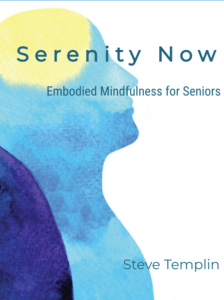I can hear Deepak Chopra, M.D. saying that the purpose of the human nervous system is to make your beliefs come true. If that’s true, it would be wise to examine your beliefs carefully.
I can also hear cell biologist Bruce Lipton, Ph.D., who authored The Biology of Belief, reminding us that beliefs control the expression of our genes, and ultimately our health.
If you take a look at your life and note what comes regularly as if it was programmed to come, you’ll have a clue towards identifying established unconscious beliefs that are ‘programming’ your body and your life experience.
You can also look at what you desire to experience that’s missing in your life for insight into beliefs that you would like to update or upgrade to support your life ‘programming’.
One of the essential beliefs that’s responsible to a large degree for supporting our health and happiness revolves around the issue of safety.
For example, if I deeply believe that I’m safe my nervous system and biochemistry will perform in a fashion that leaves me resilient physically and emotionally. On the other hand, if I unconsciously believe that life is inherently dangerous then I”ll live in a state of fear and hypervigilance where anxiety, tension, inflammation, and pain would be likely experiences.
Unrelenting unconscious fear scrambles the healthy functioning of the autonomic nervous system and exhausts our resources. This is a state that often underlies adrenal fatigue or exhaustion.
Balancing for the belief ‘I’m safe in the world’ can either prevent or help to resolve the symptoms I just listed in the last paragraph. Those benefits come before you change your diet, add the right supplements, or do a bowel cleanse.
The healing comes because when we deeply believe that we’re safe brain function and biochemistry are transformed for the better.
Changing Beliefs with the Body’s Help
A key concept in making belief change more successful is to employ the body as well as the thinking mind and imagination. Candace Pert, Ph.D., who discovered endorphins, stated that ‘your body is your subconscious mind’.
It’s been found that when you combine mental awareness with touching, tapping, or some other form of acupuncture point stimulation, you add speed and power to your therapeutic approach.
There are a variety of Energy Psychology techniques that stimulate acupuncture points on the body to make belief change more effective and rapid. The point tapping technique call EFT is probably the most popular.
I’ll share a simple version of another technique called Havening that involves gentle touch rather than tapping to support rapid belief change. Havening was developed by Dr. Ronald Ruden, M.D, Ph.D. and is frequently used to treat PTSD.
Here are the steps:
Since we’re not doing any muscle testing at this point we can do a subjective before and after test. You can notice how it feels in your body, in your heart, when you say the words ‘I’m safe in the world’. You can note on a 1-10 scale … ten being really true …. how true or honest that statement feels … or if it feels like you’re fibbing.
- First, begin Havening touch. This is performed by crossing your arms and gently stroking down from your shoulders to your hands. One downward stroke every second or two is fine. Maintain the downward stroking throughout this procedure.
- Repeat the following phrase while continuing the Havening touch. ‘Even though I don’t feel safe in the world I deeply love and accept myself just as I am’. Repeat the statement three times while continuing the Havening touch.
- Next, while continuing the Havening touch, repeat ‘I feel safe in the world’. Repeat this phrase for a full minute while breathing slowly.
- Then, while continuing the Havening touch, bring to mind a favorite place, or someone or something that allows you to feel safe and enjoy that ‘safe’ experience while you breathe slowly. Really feel how good that feels for a full minute.
- Once again, repeat ‘I’m safe in the world’ for a full minute while continuing Havening touch and the slow breathing.
Finally, reassess how the statement ‘I’m safe in the world’ feels and rate it once more from 1-10. Ideally, you’ll notice an improvement. You can repeat the steps above to increase the level of trueness to the statement.
In the next post, I’ll talk more about safety and its influence on the brain.


 Steve is a retired Doctor of Oriental Medicine, Acupuncture Physician, and HeartMath Trauma-Sensitive Certified Practitioner with over 35 years of clinical experience in the fields of Energy Medicine, Energy Psychology, and Biofeedback.
Steve is a retired Doctor of Oriental Medicine, Acupuncture Physician, and HeartMath Trauma-Sensitive Certified Practitioner with over 35 years of clinical experience in the fields of Energy Medicine, Energy Psychology, and Biofeedback. 